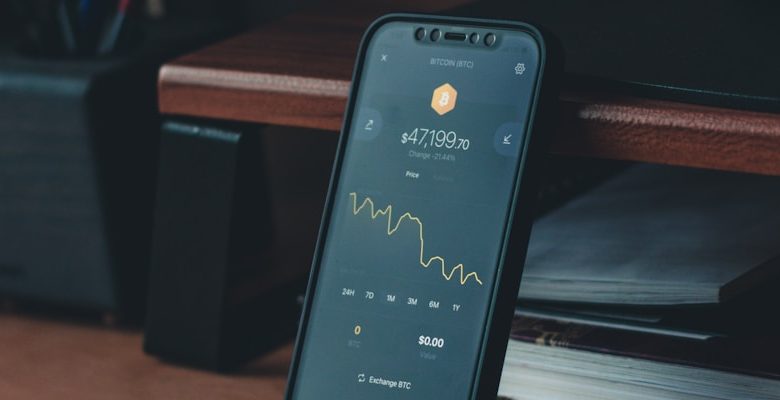What is a Blockchain Oracle? Bridging the Gap Between On-Chain and Off-Chain Data

- Understanding the Role of a Blockchain Oracle
- The Importance of Reliable Off-Chain Data in Blockchain
- How Blockchain Oracles Ensure Data Accuracy
- Bridging the Gap: On-Chain vs Off-Chain Data
- Challenges Faced by Blockchain Oracles
- Exploring Use Cases for Blockchain Oracles
Understanding the Role of a Blockchain Oracle
The role of a blockchain oracle is crucial in bridging the gap between on-chain and off-chain data in a decentralized network. An oracle serves as a trusted source of external information that can be verified and used to trigger smart contracts on the blockchain. This helps to enable the execution of complex transactions and agreements that require real-world data.
By providing access to off-chain data, such as market prices, weather conditions, or sports scores, a blockchain oracle enhances the functionality and utility of smart contracts. This allows for the automation of various processes without relying solely on data stored within the blockchain itself. As a result, smart contracts can interact with the external world in a secure and reliable manner.
Furthermore, blockchain oracles play a vital role in ensuring the security and integrity of the data being fed into the blockchain. They act as intermediaries between the blockchain and external sources, verifying the accuracy and authenticity of the information provided. This helps to prevent malicious actors from manipulating the data and compromising the integrity of the blockchain network.
The Importance of Reliable Off-Chain Data in Blockchain
One crucial aspect of blockchain technology is the reliance on reliable off-chain data. Off-chain data refers to any information that is not stored directly on the blockchain but is necessary for smart contracts and decentralized applications to function effectively. Without access to accurate off-chain data, blockchain systems would be limited in their capabilities and susceptible to errors and manipulation.
Off-chain data plays a vital role in bridging the gap between on-chain transactions and real-world events. This data can include market prices, weather conditions, sports scores, and other external factors that smart contracts need to execute properly. By utilizing blockchain oracles, which are trusted sources of off-chain data, developers can ensure the integrity and accuracy of the information being used in their decentralized applications.
The importance of reliable off-chain data cannot be overstated in the context of blockchain technology. Inaccurate or manipulated data can lead to smart contracts executing incorrectly, resulting in financial losses or other negative consequences for users. By integrating blockchain oracles into their systems, developers can access real-time data from trustworthy sources, ensuring the security and efficiency of their decentralized applications.
Overall, the use of reliable off-chain data through blockchain oracles is essential for the continued growth and adoption of blockchain technology. By leveraging external data sources in a secure and verifiable manner, developers can unlock new possibilities for decentralized applications and smart contracts, ultimately creating a more robust and reliable blockchain ecosystem.
How Blockchain Oracles Ensure Data Accuracy
Blockchain oracles play a crucial role in ensuring the accuracy of data that is brought onto the blockchain from external sources. By acting as a bridge between on-chain and off-chain data, they provide a means for smart contracts to access real-world information in a secure and reliable manner.
One of the primary ways in which blockchain oracles ensure data accuracy is through the use of multiple data sources. By aggregating information from various reputable sources, oracles can cross-reference data to verify its authenticity. This helps to mitigate the risk of false or manipulated data being introduced to the blockchain, thereby maintaining the integrity of the system.
Another key method used by blockchain oracles to ensure data accuracy is through the use of consensus mechanisms. By requiring multiple oracles to independently verify and validate the same data, consensus can be reached on the accuracy of the information. This adds an extra layer of security and trust to the data being brought onto the blockchain.
Furthermore, blockchain oracles often utilize cryptographic techniques to ensure the integrity of the data they provide. By encrypting data and using digital signatures, oracles can verify the authenticity of the information they transmit, making it tamper-proof and secure from external manipulation.
Overall, blockchain oracles play a vital role in maintaining data accuracy on the blockchain by leveraging multiple data sources, consensus mechanisms, and cryptographic techniques. By ensuring that only reliable and trustworthy information is brought onto the blockchain, oracles help to uphold the integrity and reliability of the entire system.
Bridging the Gap: On-Chain vs Off-Chain Data
One of the key challenges in blockchain technology is bridging the gap between on-chain and off-chain data. On-chain data refers to information that is stored directly on the blockchain, while off-chain data exists outside of the blockchain network.
To address this issue, blockchain oracles play a crucial role in facilitating the flow of off-chain data onto the blockchain. By acting as intermediaries between the two sources of information, blockchain oracles help ensure that data from external sources can be securely and reliably integrated into smart contracts and decentralized applications (dApps).
This seamless integration of on-chain and off-chain data is essential for the overall functionality and utility of blockchain networks. It enables smart contracts to interact with real-world data, opening up a wide range of possibilities for applications in various industries such as finance, supply chain management, and healthcare.
By leveraging blockchain oracles, developers can access a wealth of external data to enhance the capabilities of their decentralized applications. This includes real-time market prices, IoT sensor data, weather information, and more. With the help of oracles, smart contracts can execute predefined conditions based on the external data received, automating processes and enabling new use cases for blockchain technology.
In conclusion, blockchain oracles serve as a vital link between on-chain and off-chain data, enabling the seamless integration of external information into blockchain networks. This integration is essential for the advancement of decentralized applications and the widespread adoption of blockchain technology across various industries.
Challenges Faced by Blockchain Oracles
One of the major challenges faced by blockchain oracles is the issue of data accuracy. Since oracles are responsible for fetching real-world data and feeding it into smart contracts, there is a risk of inaccurate or manipulated data being transmitted. This can lead to incorrect outcomes and potential vulnerabilities in the blockchain system. To address this challenge, various security measures and verification mechanisms need to be implemented to ensure the integrity of the data being provided.
Another challenge is the problem of data connectivity. Oracles need to have reliable access to off-chain data sources in order to provide timely information to smart contracts. However, there may be instances where the connection is disrupted or the data source becomes unavailable, leading to delays or failures in the data transmission process. It is crucial for blockchain oracles to establish redundant connections and backup systems to mitigate this risk and ensure continuous data availability.
Additionally, scalability is a significant challenge for blockchain oracles. As the volume of transactions on the blockchain network increases, the demand for real-time data also grows. Oracles need to be able to handle large amounts of data efficiently and without delays to support the expanding ecosystem. This requires constant optimization of the oracle infrastructure and the use of advanced technologies to enhance performance and scalability.
In conclusion, blockchain oracles play a vital role in bridging the gap between on-chain and off-chain data, but they also face several challenges that need to be addressed. By focusing on data accuracy, connectivity, and scalability, blockchain oracles can overcome these obstacles and fulfill their crucial function in the blockchain ecosystem.
Exploring Use Cases for Blockchain Oracles
Blockchain oracles have a wide range of use cases beyond simply providing off-chain data to on-chain smart contracts. By enabling smart contracts to interact with external data sources in a trustless manner, blockchain oracles can facilitate a variety of innovative applications across different industries.
One common use case for blockchain oracles is in decentralized finance (DeFi). DeFi platforms often require real-time market data, such as asset prices or exchange rates, to execute complex financial transactions autonomously. By leveraging blockchain oracles, DeFi protocols can securely access this data from external sources, ensuring the accuracy and reliability of the information used in their operations.
Another use case for blockchain oracles is in supply chain management. By connecting smart contracts on the blockchain with IoT devices and other off-chain data sources, companies can create transparent and traceable supply chains. This enables real-time tracking of products throughout the entire supply chain, reducing the risk of fraud and improving efficiency.
Blockchain oracles can also be used in the gaming industry to create provably fair games. By feeding random number generation data from external sources into smart contracts, gaming platforms can ensure the integrity of their games and prevent manipulation. This enhances the overall gaming experience for players and builds trust in the fairness of the platform.
Overall, blockchain oracles play a crucial role in bridging the gap between on-chain and off-chain data, opening up a world of possibilities for the integration of blockchain technology into various sectors. As the adoption of blockchain technology continues to grow, the demand for secure and reliable data feeds provided by blockchain oracles will only increase, driving further innovation and development in this space.



